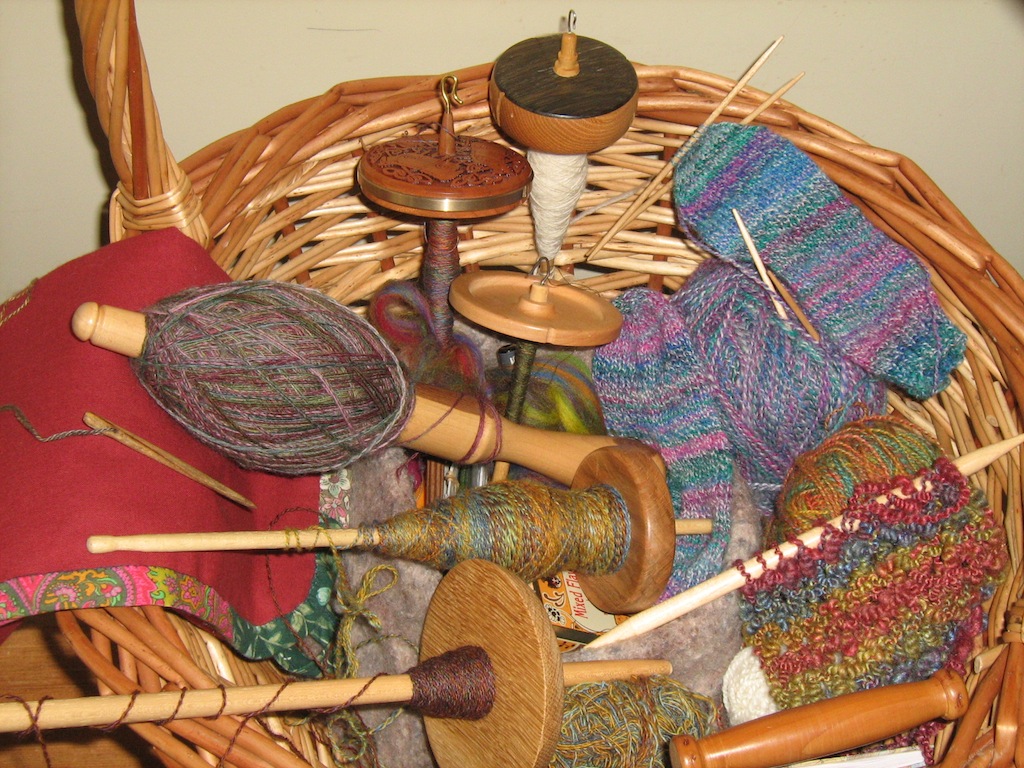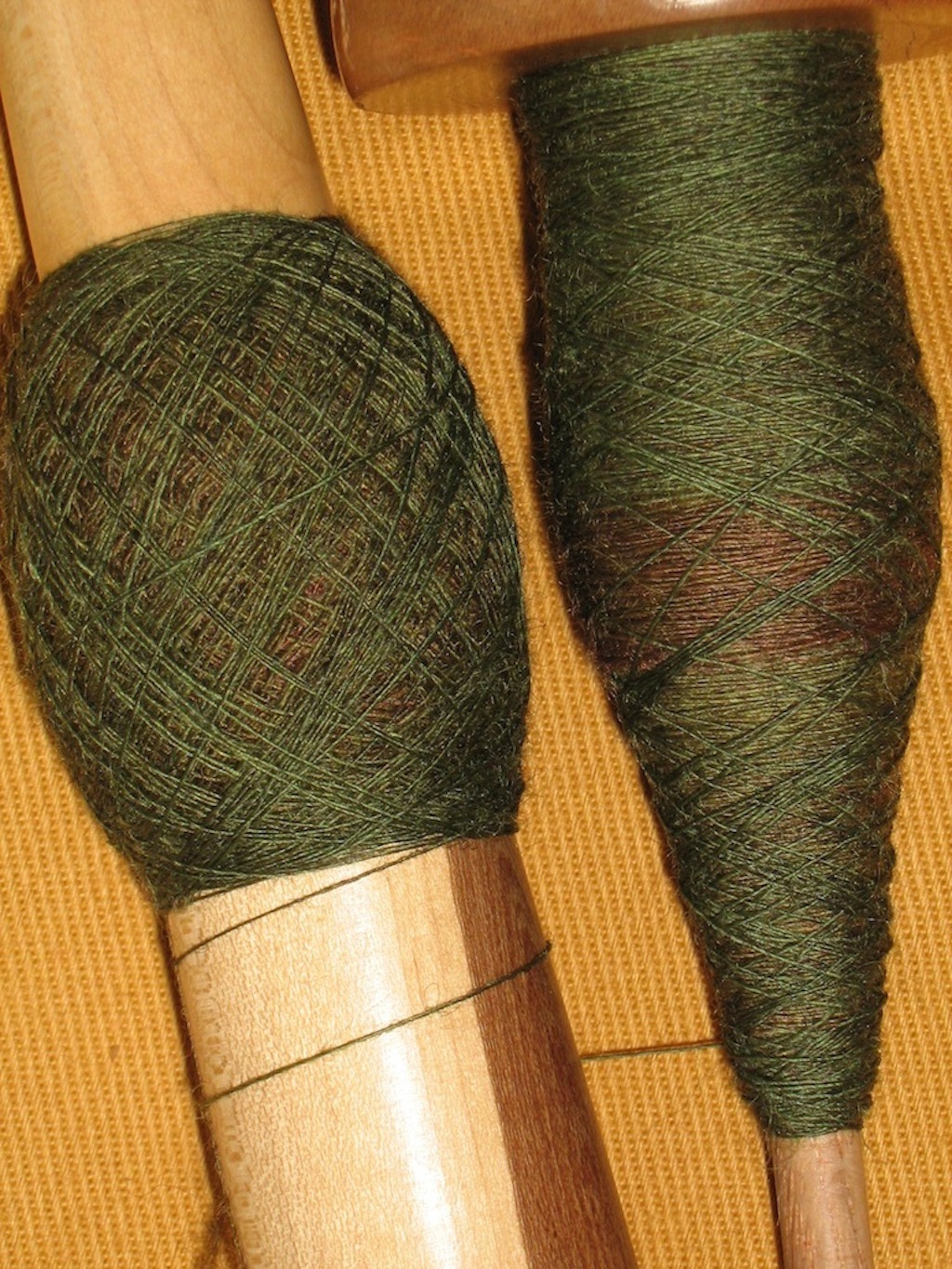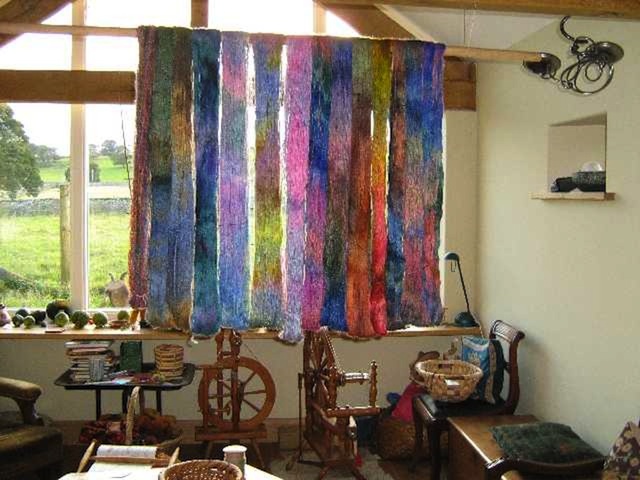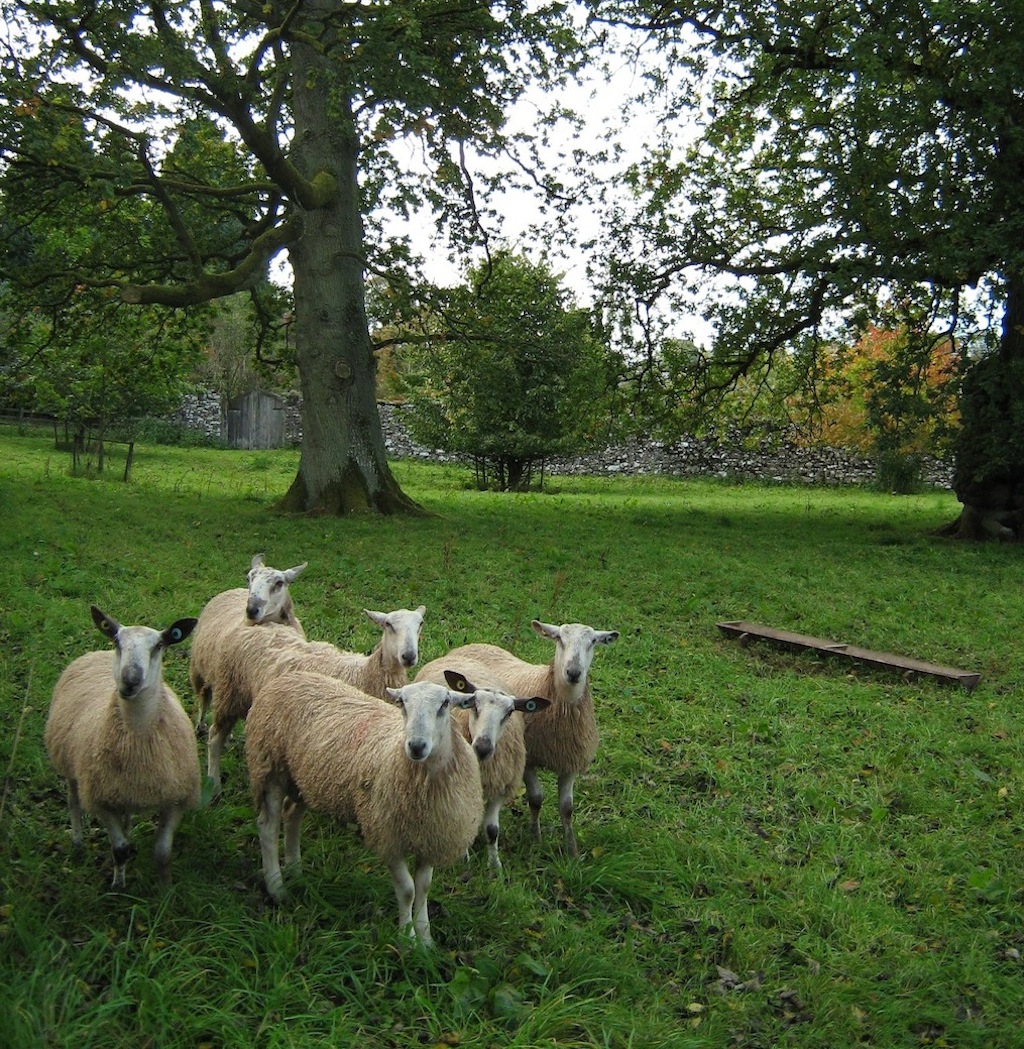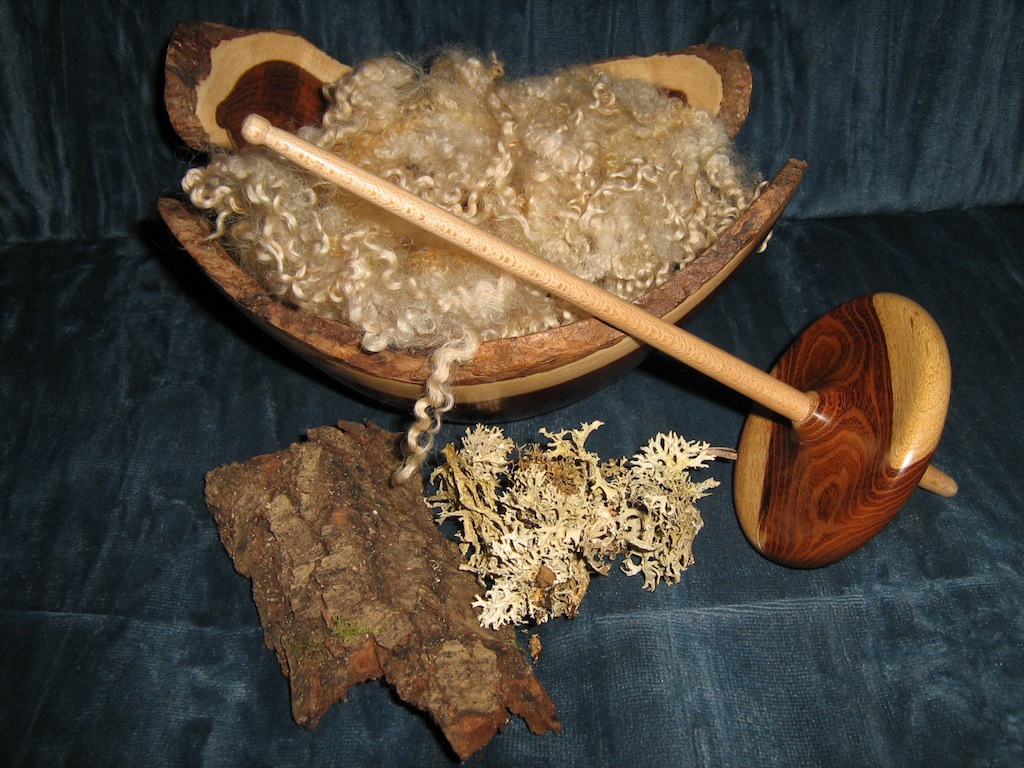This instalment concludes our 3-part interview with Cecilia about the creation of her handspun yarns. Earlier today she gave us a tour of some of the yarns she produces, and wrote eloquently about the relationships between the place where she lives and the yarns that she spins. Finally Cecilia will tell us about the tools that she uses to create her distinctive handspun yarns… this post takes the idea of ‘Closing the gap’ one step further, so that not only is WOOL traceable, but so too are the tools used to turn it into yarn…
5. What are your favourite tools?
This made me laugh! It’s like asking who is my favourite friend! I love them all for the different things they have to offer.
One of the splendid things about being a handspinner is the sense of community there is in the huge network of craftspeople around wool-working, who all support each other. Because of my work over the years for Woolfest, which is organised by the Wool Clip co-operative to which I belong, I have had the honour to meet some of the most talented craftspeople in the country and many have become friends. This makes it a special delight to use the tools which they make.
I have talked elsewhere about my spinning wheels and my wool-winding equipment, so here I will show you a few of the portable tools. I can’t possibly mention everything, so I chose a typical basketful, as I might take for a day’s work or a demonstration:
Firstly, the spindles: there are five in the basket, which reflects just how much I love them. At the top of the picture is one made by British spindle-maker Ian Tait of IST Crafts. I have several of his spindles, but this one is very special: the black wood on the whorl is Fenland bog oak, 3,000 years old. The tree was alive when all the yarn in the world was being made using only spindles! Under it is a spindle which feels as light as a feather because it weighs only 12g and it is perfect for very fine lace and warp thread – made by Michael Williams, with mathematical precision, it spins for ages and can comfortably hold four times its weight in yarn which means I can produce 50g hanks from it without any knots in them. The beautifully-carved spindle to the left was made by Golding of Vermont. It is a joy to use, but I love it mostly because it was a gift from my husband, Graham. The spindles which get the most use, however, are the low-whorl ones which are made by my friend and local wood-turner, John Lackie. Their design is simple, but they are superb spinners, and I usually use them outdoors because they are solid enough that a drop doesn’t hurt them and they don’t seem to mind getting rained on. The only problem with them is that they are on sale in the Wool Clip, which means it’s difficult not to come home with more of them after a day at work there! (That’s true, actually, of everything in the shop – it can be hard, working in such a woolly paradise, not to get distracted by all the beautiful things!)
On the left of the basket is a nostepinne, or winding stick, an indispensable tool for winding the wool from my spindle, like this. Holding the nostepinne in one hand and the spindle in the other, it can be easily done on the move:
This one is made of maple and is very lightweight. It was a present from my friend Lea who comes over from the US every year to help us at Woolfest and was made by friends of hers from a maple tree on their farm.
My other really useful spindling tool is the elm-wood bodkin which I hang on a thread around my neck when I go out. It’s by my Wool Clip colleague, Jean Wildish and is simply a beautifully-made pointy stick and is perfect for quickly untangling any yarn which has knotted, by jabbing the point into the middle of the knot and wiggling. It’s resting on a spinning cloth, a gift from my friend June Hall. This is such a great idea: a cloth which is dark on one side and light on the other and sits on my lap, so that I can see what’s going on when I’m spinning in dark places (and it stops bits of fibre getting everywhere too!).
I usually have some knitting needles with me in case I want to make samples and always a sock in progress, since I also teach sock knitting and write patterns for the mill-spun yarn I produce with my colleague Jan Hicks, who dyes it in the most gorgeous colours. Jan’s amazing dyeing is incredibly important to my work, but it is mostly her mohair which I use in my handspinning (she keeps a prize-winning flock of angora goats and gave me little goat Katia, (my first angora), which is of course 100% Goat and not 100% Wool, so I haven’t shown her here! She also dyes fleece and combed tops, however, and I need all my powers of resistance (again!) not to empty the shop of it, since we do need to have something there for our customers!
And the basket! A wool-worker can never have too many baskets, or the wool gets out of hand and we end up wading through it. This one was made by Martin Buckle, who has been a dear friend for most of my life – as children, we used to look forward to his visits so much, because he entertained us with the amazing things he made and he taught us so much. It isn’t seen to its best advantage in the picture, but it is truly the Queen of All Baskets, perfect for slinging over the arm with everything needed for a woolly day out!
Finally, a very special wheel. It’s the one in the middle of the picture here in my workshop. (That’s Jan’s beautifully-dyed yarn hanging to dry.)
This wheel belonged to my friend and Wool Clip colleague, Caroline Rawlinson, who had a very successful spinning and dyeing business and originally came up with the idea for Woolfest. I met her ten years ago and, with my friend June, she taught me to spin. It was with their enthusiastic encouragement that I joined the Wool Clip. Carolyn died in 2007. I still miss her very much and think about her most days and especially when I’m using her wheel.
One day I hope I’ll be able to make yarn as beautiful as hers.
6. If money/time were absolutely no object, what would be your ultimate handspinning project?
I always have so many ideas going on for projects that it’s hard to choose the best one, but I do love making blankets! I would love to make a huge blanket. With fleece from the sheep in the village. Coloured with dyes from local plants I forage. Spun on the spindle – very finely, but plied lots to make a thick yarn.
Here are some of the young Blue-faced Leicesters in a paddock of old oak trees at Johnby Hall:
Here is some of their fleece, in a beautiful bowl of laburnum wood from an old tree which used to live in the corner of the paddock (well fenced off, because laburnum is poisonous) and which local wood-turner Alan Wedgwood made into bowls when it finally came down. With some bark from a fallen branch of one of the oaks, which will give a rich brown dye, and some lichen for yellow dye, gathered from the ground after a storm (never from the tree – it takes many years to grow). There are other plants for different colours in the hedge beside the paddock.
And a tempting empty spindle, made from laburnum by John Lackie…..
This may take some time…..
What a vision for a joining up of place and materials that last image is and how wonderful it would be if all our textiles could be made with such connections between places and materials. All content and photos © Cecilia Hewett and used here with her kind permission. Thank you so much Cecilia for bringing such depth and richness to the art of handspinning! WOVEMBER readers – if you would like a chance to win a small sampler of Cecilia’s beautiful yarns, there is still time for you to enter our competition
